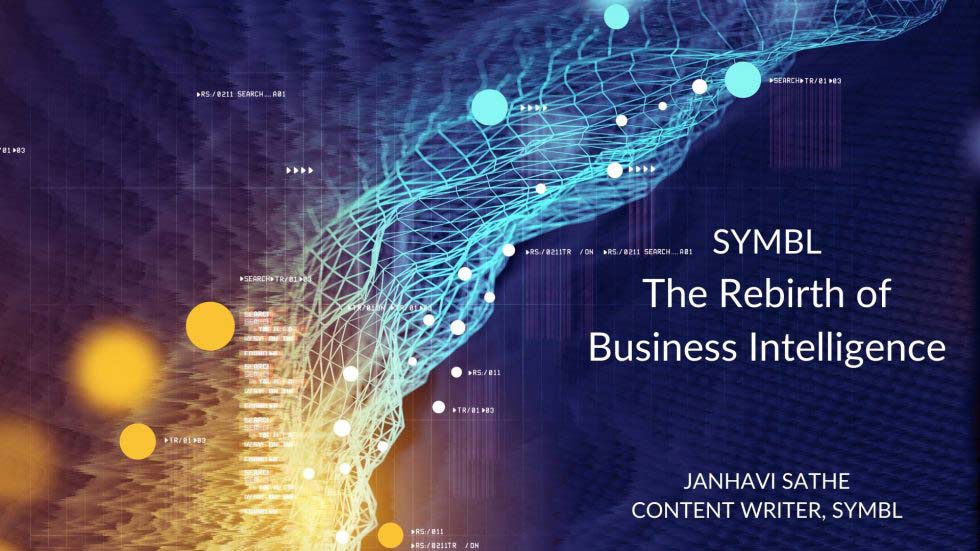Business Intelligence (B.I.) is the infrastructure that a business uses to collect, organize and manage all its data. Everything from simple spreadsheets to the more thorough dashboards, all fall under the umbrella of B.I. While B.I. has been a fundamental part of operations and business strategy decisions, it is traditionally used to present data in a more readable way. As Michael F. Gorman, professor of operations management and decision science at the University of Dayton in Ohio, said in an article published by CIO Magazine, “[Business Intelligence] doesn’t tell you what to do; it tells you what was and what is.”
As this space has evolved with the adoption of Artificial Intelligence(AI), we’ve identified some of the ways in which AI enhances the simple business intelligence tools into something more powerful.
Where is the B.I. train headed?
Among several important developments thanks to the adoption of machine intelligence, one important aspect is the expanding sources of data. While businesses take into consideration most of the new technologies like IoT, click tracking, and Robotic process automation (RPA) systems that provide waterfalls of useful intel, a lot of effort is spent to discover additional data sources.
With the increase in the number of data sources, the next stop on the data train is at the junction of big data technologies. There is a need for advanced AI to analyze large amounts of data and there are efforts being taken to address it. Apache Hadoop and Spark are some of the most popular open-source frameworks to store and process big data in a distributed environment.
One of the most commonly adopted new business intelligence approaches due to significant ROI potential is Predictive business analysis. This is where large amounts of historical data is analyzed to predict future outcomes – one of the most common use cases is the implementation of Next Best Action in call centers. For example, a call center agent might use the historical data from past appointments to reach out to the customer to book their next appointment.
As we continue to explore the avenues of real-time B.I, conversation analysis systems will become crucial so that these predictions based on historical data can complement with real-time customer conversation experiences.
Conversational Intelligence – the third eye of B.I.
Sophisticated conversational analysis platforms can contribute immensely to the usefulness of the data sources. Speech to Text platforms have been in existence for a while and are in fact starting to become commoditized, but extracting the nuggets of information and insights can change how the real-time B.I tools deliver value to organizations. This capability extends B.I beyond “what is” and “what was” and is more indicative of “what can be done”. This is where B.I becomes action-oriented.
Prophecies for the unleashed
The influx of data seen by businesses encourages the use of proactive, real-time systems for reporting and analysis that can help with alerts and updates.
Getting the meta-conversation data source: Conversations are the last mile of data getting lost today and is heavily underutilized. The meta-level information on customer conversation statistics can give horsepower to the B.I systems for real-time, actionable intelligence – for example understanding customer sentiments can explain the outcomes of the exchange.. Imagine having this flow into the customer support organization to influence real-time call center conversations resulting in service recovery. For supervised learning approaches, it is important to highlight the dependency of the quality of an AI model on the quality of the data, which is why the exploitation of all the available data should be utilized. Sources such as meetings, client interactions website visitors, chatbots, feedback and review forums, and demand trends are a few gold mines of data.
Consider the infamous 80-20 rule: It is an axiom of business management that “80% of sales come from 20% of clients”. With so much data, it is important to identify what is most important. Whether this identification is done through AI or domain experts within the company it is definitely something to keep in mind.
Beyond visual representation and the Role of Natural language generation (NLG) in B.I: New developing branches of AI like NLG have a major impact on the usefulness and accessibility. Jon Arnold, Principal of J Arnold and Associates, in his article for Enterprise Management 360 says- “A key reason why BI is a strong use case is that these platforms provide visual representations of the data, but this isn’t always helpful for workers. Not all forms of data can be easily visualized, and visual outputs aren’t always enough. Sometimes a written analysis is what’s needed, and other times voice is the format that works best.”
Stay tuned for a blog that goes beyond traditional B.I and how cognitive RPA and B.I are changing the way enterprises work. If you are interested in learning how Symbl helps B.I. teams collect conversational data by setting up the metadata and determining the right design patterns, contact us for a demo.
